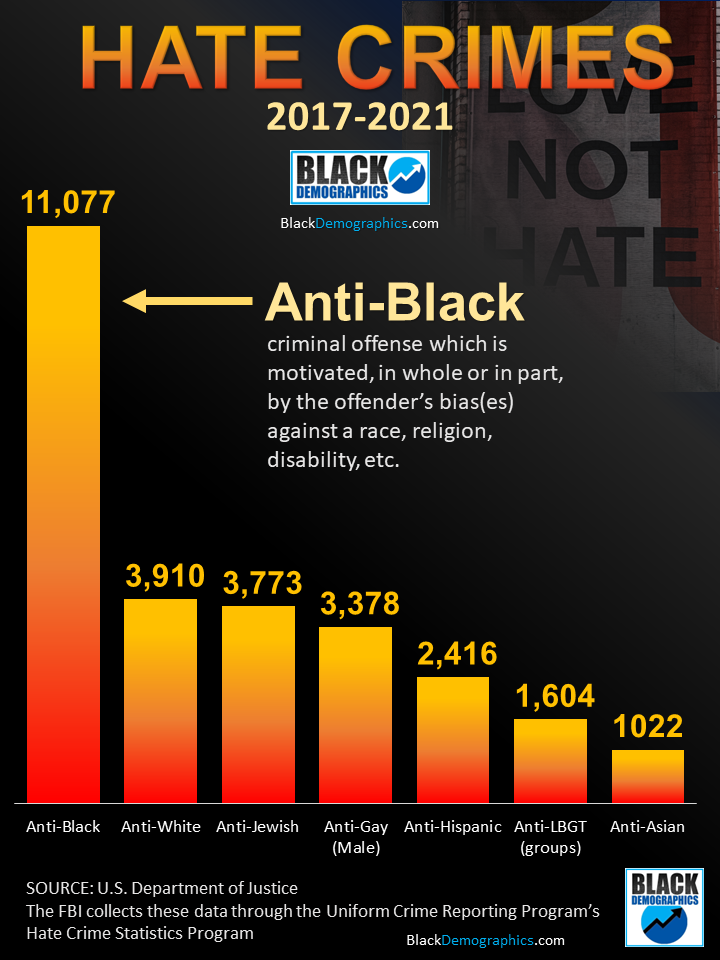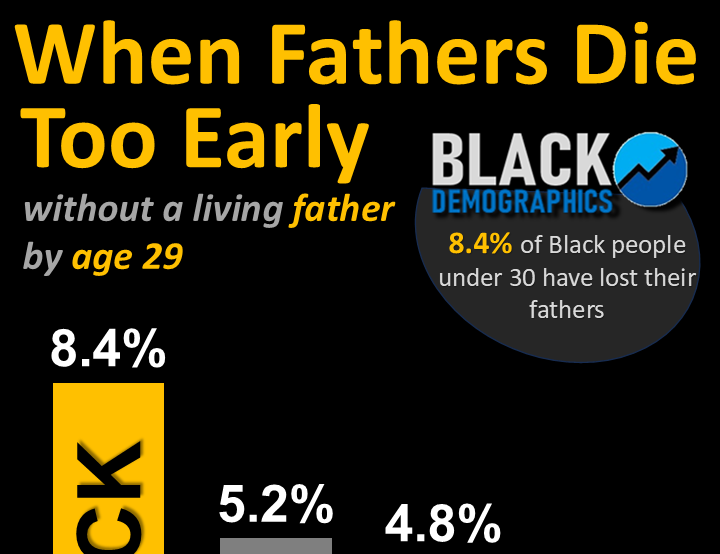
In our most recent analysis, we examined hate crime data from the Federal Bureau of Investigation (FBI) for the five-year period spanning 2014 to 2018.We now have updated statistics up to 2021, so we can compare the data from 2017 to 2021. Even though there is some overlap in the years we’re looking at, hate crimes against African Americans went up by 2% when compared to the earlier data. In fact, there were still twice as many hate crimes against African Americans than any other group by far.
Concurrently, hate crimes targeting White, Jewish, and gay male individuals experienced reductions of 6%, 7%, and 11% respectively. As anticipated, anti-Asian hate crimes saw the most significant escalation, with a 36% increase from the prior period. However, total number of anti-Black hate crimes remains over ten times higher than anti-Asian incidents. Furthermore, as predicted, hate crimes perpetrated against the LGBT community—specifically lesbian, transgender, and bisexual individuals—rose by 11% during the 2017-2021 time frame.
These increases were in line with media reports concerning an increase of hate crimes of Asians and transgender individuals. We do not yet know how many hate crimes there were against against the Black LGBT community.
More About Hate Crime Determination
from: https://le.fbi.gov/file-repository/hate-crime-data-collection-guidelines-and-training-manual.pdf/view
Two-Tier Decision-Making Process
“Once the development of this collection was complete, the FBI UCR Program surveyed state UCR Program managers on hate crime collection procedures used at various LEAs which collected hate crime data employing a two-tier decision-making process. The first level is the law enforcement officer who initially responds to the alleged hate crime incident, i.e., the “responding officer” (or “first-level judgment officer”). It is the responsibility of the responding officer to determine whether there is any indication the offender was motivated by bias. If a bias indicator is identified, the officer designates the incident as a “suspected bias-motivated crime” and forwards the case file to a “second-level judgment officer/unit.” (In smaller agencies this is usually a person specially trained in hate crime matters, while in larger agencies it may be
a special unit.)”
“It is the task of the second-level judgment officer/unit to review the facts of the incident and make the final determination of whether a hate crime has actually occurred. If so, the incident is to be reported to the FBI UCR Program as a bias-motivated crime.”







